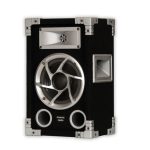Wired speakers are typically connected to the sound source, such as an amplifier or head unit, using speaker wire. Speaker wire comes in different types and thicknesses. The kind of speaker wire you use when connecting speakers to the sound source may affect the quality of sound. It affects sound quality depending on the properties of the speaker wire. The properties of a speaker wire are inductance, capacitance, and resistance. Amongst these properties, resistance has the highest effect on sound quality. Read on to find out how speaker wire affects sound quality.
Effect of Resistance on Sound Quality
The resistance of a speaker wire has a great effect on sound quality. If the resistance of a speaker cable is greater than five percent of the speaker impedance, then you’ll notice a negative effect on the performance of the speaker. Impedance is the level of resistance that a speaker has to the incoming current. Resistance is affected by the length and thickness of the speaker wire. As a result, the length and thickness of the wire you use to connect your speakers will determine the kind of sound quality you’ll experience.
Effect of speaker wire length on resistance and sound quality

Typically, longer speaker wire results in higher resistance. Consequently, higher resistance results in poor sound quality. Thus, you should keep the length of the speaker wire as shortest as possible. For instance, avoid coiling speaker wires. Doing so will increase its length and resistance. You’d rather cut off excess wire rather than coiling it up. In this regard, keep the speaker wire as straight as possible to minimize the overall length that will run between the speaker and the sound source. However, you should still position the speakers appropriately. If possible, maintain the same length for the left and right speakers to keep their impedance similar. Doing so will allow for balanced sound.
Also Read: Best 1 Ohm Stable Amp– Buying Guide and Reviews
Effect of speaker wire thickness on resistance and sound quality
The thickness of a speaker wire is also known as speaker wire gauge or cross-sectional area of speaker wire. In this case, the thicker the wire, or the larger the cross-sectional area of the wire, the less the resistance. Similarly, a lower gauge number means less resistance.
Type of Speaker Wire Material and Their Effect on Sound Quality

The type of speaker wire material used also has a major effect on sound quality. Most speaker wires are made of copper. Copper is preferred due to its affordability in mass production and lower resistance. The only shortcoming of copper material is that it oxidizes. Oxidation can be prevented by insulating copper wire appropriately. Thus, if you’re using copper speaker wire for your sound system, ensure it is properly insulated. Otherwise, it will oxidize when exposed and weaken the connection, thereby causing distortion and low sound quality.
On the other hand, silver speaker wire has less resistance than copper, but it’s quite expensive. Gold is preferred for terminating speaker wire since it doesn’t oxidize. However, gold is rarely used to make speaker wire since it has higher resistance than both silver and copper.
Conclusion
Speaker wire affects the load it feeds a speaker based on the combination of the wire material, thickness, and length. Thus, when choosing a speaker wire for your sound system, consider all these factors to get the best sound experience. Keep the speaker wire as short as possible. Also, use thicker wire for longer wire runs. Besides, ensure the speaker wire is properly shielded and connectors are properly fixed. Also, the wire should be of high quality.
Michael Evanchuk is a San Francisco-based sound engineer with 20 years’ experience installing, troubleshooting, and repairing commercial, automotive, and household sound equipment. Evanchuk owns an auto stereo center, where he offers highly competitive car audio installation and repair services. He has written dozens of articles on different sound engineering topics, all of which have been published in leading journals, blogs, and websites.





